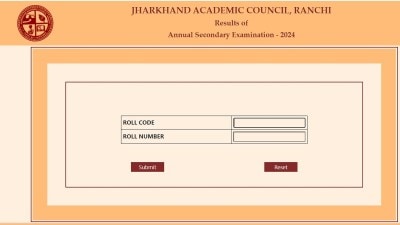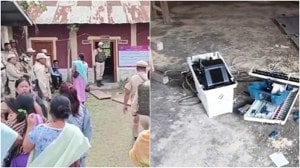- India
- International
Chennai water crisis: 3 months enough to implement RWH plan, won’t affect weaker sections, says govt
According to activists in the city, the state government needs to install rain water harvesting systems and recharge wells and revive lake catchment areas to stave off a water crisis in Chennai.
 Buildings across the city have to install Rain Water Harvesting structures within the next three months.
Buildings across the city have to install Rain Water Harvesting structures within the next three months.
After the Tamil Nadu government gave a stipulated period of three months to set up Rain Water Harvesting (RWH) structures in all government, commercial, educational and residential buildings across Chennai, the feasibility of the city-wide project remains to be seen.
As per the directive of the state government, building owners across Chennai have to set up RWH systems over the next three months, failure of which will attract legal action.
READ | Tamil Nadu sets three-month deadline for building owners to install rainwater harvesting structures
Speaking to Indianexpress.com, Jayaram Venkatesh, a civil rights activist with Arappor Iyakkam said that the deadline for city-wide implementation should be extended if it is not possible to fulfil the government order within three months.
Talking about the proposed RWH structures, Jayaram said, “The structures that are going to be set up at home are all micro RWH systems. The structures that are set up near water bodies such as tanks, lakes and rivers are all macro RWH systems. Only macro structures can help in storing water and preventing floods. Why is there no deadline for this?”

The activist said that it will take a minimum of six months to one year for a city-wide implementation of RWH structures.
Echoing his views is Pooja Kumar, an activist with the Coastal Research Centre at Besant Nagar, Chennai. She said that implementing RWH structures will be difficult in Chennai’s densely populated areas such as Kathivakkam and Ennore in North Chennai. Moreover, most of the houses there are under construction and being refurbished under the Pradhan Mantri Awas Yojana (PMAY) scheme.
“It will be a challenge given that most of the residents have taken out loans to build homes. Investing money for RWH structures will be a challenge for North Chennai residents. Besides, the government has been constructing numerous Storm Water Drains (SWD) across the city for a while now. This shift in attitude from building SWDs to RWH structures should be questioned,” said Pooja.
As per the government mandate, the expenses for installing RWH structures will have to borne by residents. While this expense can be easily borne by the middle class and affluent sections of society, the expense for the economically weaker sections is a game of chance between paying a fine and investing the money in necessities. Jayaram said it is the responsibility of the Chennai Metro Water Supply and Sewerage Board (CMWSSB) to come up with inexpensive RWH structures in the city, especially for households which cannot afford to construct a new RWH system.
“While RWH structures are definitely better than SWDs, we need to see how feasible it is for people from low-income groups in Chennai to invest a huge amount of money in a short period of time. Moreover, it is necessary for the government to provide aid to lower-income groups to construct RWH structures,” said Pooja.
Chennai’s housing design ranges from sparse population-wide roads to dense population-narrow streets, with houses in densely populated areas of the city built close to each other and having little to no space on the rooftops. Since the water collected through RWH depends on the amount of rainfall and the area of the rooftop, the activists opined that it would be a better option on the part of the government to come up with alternative methods.
“Recharge wells should be set up in narrow streets and non-feasible areas in lieu of RWH structures These will also help in collecting rainwater and recharging groundwater. Ideally, the government should set up a combination of individual RWH structures and recharge wells across the city,” said Jayaram.
Agreeing with him, Pooja said that the government could set up a single RWH structure in a narrow street and divert the water towards a common tank. “The government should focus on making RWH structures mandatory in areas where there is ample space and construct recharge wells for densely populated areas,” she said.
However, both the activists agreed that merely setting up RWH structures across the city will not stave off a water crisis in Chennai. “In addition to encouraging RWH, the government needs to revive catchment areas of the city’s water bodies to replenish lakes and ponds in Chennai and recharge groundwater completely”, said Pooja.
The government, however, has a different take on the issue. According to a senior Metrowater official, three months is more than enough time to finish installing RWH structures across Chennai. “The idea is to install RWH systems before the onset of the Northwest monsoon and more than 1.76 lakhs houses have already completed installation,” said the officer.
According to the official, the Greater Chennai Corporation (GCC) is planning to install common recharge wells for houses in densely packed localities with narrow streets and row houses, particularly in North Chennai since installing individual RWH units will be a challenge. “The cost for these common recharge wells will be borne by the GCC,” said the official.
The official explained that the cost for common recharge wells will vary based on the structure. The GCC will be inter-connecting the rooftops in densely packed localities and will identify a common well for collecting the rainwater. After this, the GCC will install a filter chamber for houses which do not have them, at a maximum cost of Rs 2,000. Further, borewells can also be converted into recharge wells for RWH harvesting.
The officer said that the government is ensuring that there is a combination of recharge wells and RWH structures in place across Chennai to stave off a water crisis.
Apr 19: Latest News
- 01
- 02
- 03
- 04
- 05






































